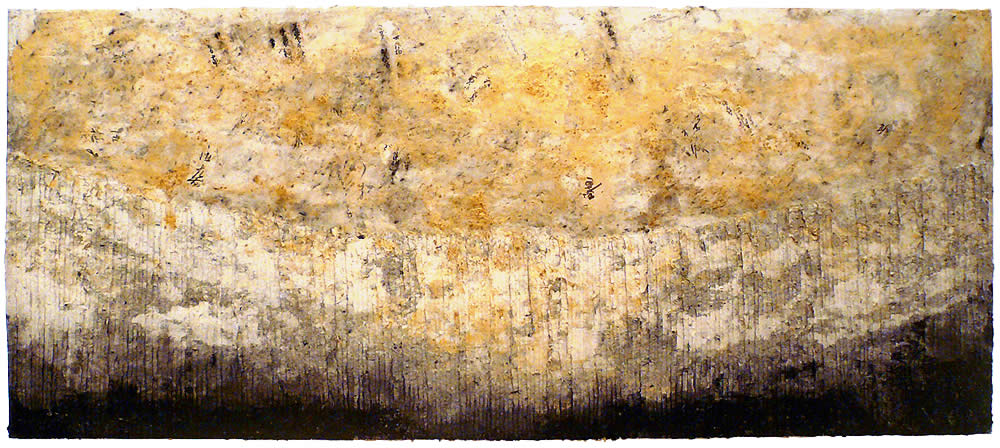Artist's Statement 1 2 3 4 | Exhibition
From birth until death, human life is bound by a linear cycle, whereby existence cannot escape the ineluctable passage of time. In contrast, washi marked with writing can be reconstituted to live anew through the recuperative process of soaking and pulverizing it all over again. Fujiwara Tamiko’s intent then in converting the words of her deceased lover into paper that could recirculate within the limits of linear time could have been to preserve their essence in this perpetuating form. Interestingly, the Chinese term for recycled paper can be rendered literally to mean “re-spirited paper” (huanhunzhi). While some claim that the significance of the literal Chinese meaning is negligible, this meaning resonates profoundly with Japanese history and artifacts.
During the late twelfth century toward the end of the Heian period, the power of the ruling nobility began to wane as the warrior class accumulated both wealth and weapons. Seeking to gain control of Kyoto, the ancient imperial capital of Japan, opposing warlords threw the city into turmoil, repeatedly launching attacks that continued throughout the seventeenth century. Through the opulent culture of the Momoyama period (1568-1600) that grew out of this upheaval, the warrior class flaunted its power.
In contrast, the refined aristocratic culture epitomized in the eleventh century novel The Tale of Genji evolved into the aesthetic of yugen, or the realization of grace in beauty, seen most remarkably in Nô drama and the composite aesthetics of Sen no Rikyû’s wabi-sabi as witnessed in tea ceremony. Despite the tension between the seemingly incompatible cultural trends of the opulent and the refined, they developed in tandem and remain the basis of Japanese culture to this day. The ornate versus the pure and the simple; excessive artificial adornments versus ordinary natural beauty; carnal pleasure-seekers versus those in search of spirituality and tranquility; an infatuation with an exotic, new Chinese style versus a preference for a classical Japanese style absorbed in the vicissitudes of life; movements reveling in the corporeal of the physical world versus a stoic minimalism based on Zen thought. Like the dual faces of ying and yang, the shifting powerbase during the war-torn era of the eleventh through sixteenth centuries marked this as a period both of paradoxical cultural trends as well as of cultural prosperity.
